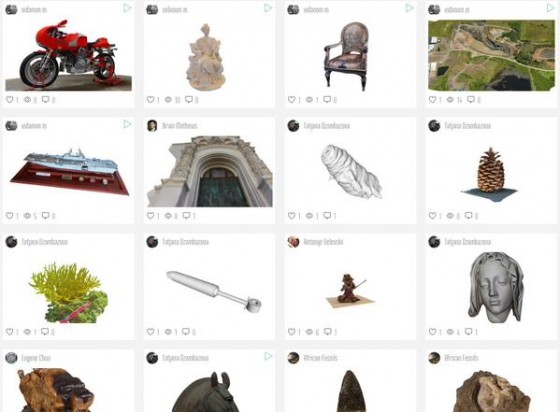Photogrammetry tool adds a 3D viewer to share models. Non-traditional 3D end users including archaeologists and miners are among the user base.
Memento has gotten many launches. Formally unveiled last spring and showcased at Siggraph this year, Memento is available for people to experiment with in the Autodesk Labs. Surprisingly, the company is still tinkering with a Mac version, but there is a Windows version free to download.
Product manager Tatjana Dzambazova is committed to seeing Memento get into the hands of non-technicians. It’s a professional tool, but the people who can use it—filmmakers, archeologists, miners, explorers, artists—don’t need to be slowed down by the technology of the tool. Dzambazova sees Memento as storytelling tool, and to that end, Autodesk has announced a new build and a Memento Gallery to allow people to share and view each other’s work.

Last summer, some of the newer tools enabled people to refine the models captured so that holes could be closed and surfaces refined with sculpting tools. The ability to sculpt tools is bringing back the tactile to our increasingly digital world.
The latest release of Memento includes a tool for publishing scans to the gallery. Users can publish with their choice of thumbnails and tags. People can also choose to embed their 3D models on their websites, in blogs, make viewable on mobile devices, etc. They can also share their original RCM files to enable downloadable models. Once published, it’s possible to change the background and lighting to best display the model. Users can also upload additional photos, embed links from YouTube videos, and publish their models to Sketchfab. The gallery has a limit of 250 MB, so models are automatically decimated and textures rebaked to fit. Large models can take some time to publish (and load from the gallery). Autodesk suggests decimating and rebaking by exporting to OBJ beforehand to create a more manageable model to send to the gallery.
Tools like Memento provide a practical outlet for the wash of sensor data we’re bringing in. Dzambazova says the new sensors are becoming as good as laser, and in fact, new sensor cameras are being built with micro four-thirds cameras, which are the next size smaller than a C size DSLR (digital single-lens reflex) photographic sensor and definitely good enough for drone work. As all that data comes in, Memento can make sense of it. When last we talked with Dzambazova, she told us that Autodesk is still tinkering with revenue ideas, but she thinks perhaps it will follow Autodesk’s new philosophy, which is to cut themselves in for a bit of revenue sharing. She says Autodesk is thinking, “When you make money, then we make money.”






